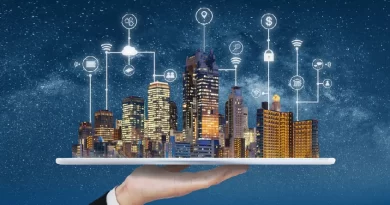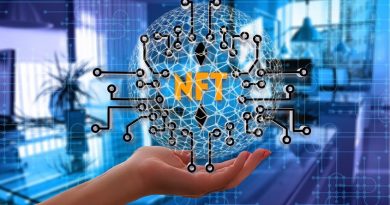Metaverse, NFT, and DeFi – The Future of the Blockchain World
The goal of Facebook’s rebranding as Meta was to carve out a niche in the crypto realm. While in the virtual world, Metaverse, together with DeFi (Decentralized Finance) and NFT (non-fungible tokens), have a real-world application case. The accessibility contributes to the virtual environment’s link to real-world issues and exchanges. With Metaverse, trading in digital art and FinTech goods became more transparent and decentralized, all while remaining secure on the blockchain.
For a variety of reasons, the year 2021 has been a watershed moment in the world of cryptocurrencies. The crypto sector reached a $3 trillion dollar market cap in 2021, while China banned all crypto trade and mining. Non-fungible tokens, decentralized finance (DeFi), and the metaverse emerged as key highlights in the cryptocurrency industry during a dramatic year for cryptocurrencies.
Metaverse
Metaverse is the most recent blockchain movement, and it looks like every organization on the planet is participating in some form. Atari made a big jump into the metaverse world in 2021, but its launch went about as well as all the Instagram disasters. The metaverse, you see, is intended to be a virtual universe including everything found in the real world. Consider it Second Life 2.0. People and businesses can purchase land, construct virtual structures, visit pubs and clubs, play interactive games, and, most importantly, communicate with other people in this virtual environment. The concept of the metaverse allows people to do whatever they want with their lives. It’s almost as if it’s intended to be a method to escape reality and live a different life. However, there are some more useful applications. Companies may use the metaverse to improve the lives of people all over the world. For example, suppose your favorite band is performing in Vegas but you are unable to go, and it is their final gig ever. In principle, the band might perform the same concert at the same time in the metaverse, where fans from all over the world could watch from the comfort of their own homes. This may then be applied to almost anything, from work meetings to dating. The possibilities are limitless.
Many firms are currently working on a slew of metaverse projects, so it isn’t much ready to explore right now, but there is a handful. As 2022 progresses, additional metaverse projects will be launched, offering different experiences and perspectives on how this future digital environment might look. We’ll also see more corporations invest in this new technology, which means you’ll be spending more time in the metaverse than you ever imagined possible. This will be aided in part by the growth of play2earn metaverses, in which users may earn money by just playing games and spending time creating their characters.
Non-Fungible Tokens
NFTs are growing right now, and some are fetching high prices. Most people associate NFTs with bizarre pieces of awful art that sell for six-figure sums, with many referring to it as money laundering on steroids. They are, for the most part, correct. However, this can be said about many emerging trends. Understanding NFTs and the science that powers them helps you to see past the fog of money and bad art, revealing limitless possibilities. NFTs are not the artwork, but rather tokens held on the blockchain. These tokens identify the possessor as the rightful owner of the artwork linked to the token. You can then use that token as collateral or to authenticate your ownership, which is where the potential of this technology lies.
Brands will use NFTs to attach ownership of products and experiences to you as time goes on. Assume you spend $100,000 on a new pair of sneakers. Someone may easily steal items from you, and you’ll have no method of proving ownership except the receipt. This is where NFTs come into play. Brands will be able to associate an item with a certain token. In this situation, your sneaks would be linked to a token via an RFID chip, barcode, or serial number. You can then use the NFT token in your wallet to prove real ownership of those items.
NFTs might also be used as tickets to acquire access to events, airlines, trains, and materials. When you buy a ticket, you’re already in a system, but by issuing tickets as NFTs, there will be a clear record of where that ticket has gone for enhanced security and to prevent ticket touting or theft. In terms of content, you may purchase an NFT that grants access to North American content on a service such as Netflix. Simply enter the token into the app and you’re good to go, with unlimited NA streaming at your fingertips.
In fact, brands are already beginning to do so. With their current album, Kings of Leon released an NFT that grants owners special access to never-before-seen content and backstage credentials. This is only going to become worse as time goes on. You won’t even realize you’re using NFTs; it’ll just be another app on your phone that does its job.
Decentralized Finance (DeFi)
DeFi was a popular trend in late 2020 and early 2021, but the strange and slightly difficult world of blockchain money holds a lot of promise. In brief, DeFi allows average individuals to achieve absolute financial freedom by taking out loans and lending money in a secure atmosphere without the stress that banks impose. Checks are instant and run by a smart contract, which means you can lend or borrow money in seconds. There is also the possibility of earning a substantial passive income by lending your money in preferred trading pairs. The DeFi environment was mostly safe and pleasurable for everyone, but there were a few rotten apples. DeFi ideas are likely to become more common as time goes on, with decentralized banks taking shape. This will usher in a new era of financial services in which smart contracts, rather than humans in suits, dominate banking.
There is also the possibility of earning a substantial passive income by lending your money in preferred trading pairs. The DeFi environment was mostly safe and pleasurable for everyone, but there were a few rotten apples. DeFi ideas are likely to become more common as time goes on, with decentralized banks taking shape. This will usher in a new era of financial services in which smart contracts, rather than humans in suits, dominate banking.
Conclusion
Metaverse, NFT, and DeFi are already here and have a significant impact on how we live our lives. However, as this technology and the principles of these three sectors of blockchain evolve, we will see the hazardous and dog-like behavior fade away, leaving behind what will become the future of all industries. It will blend in so well with your existing technology that you will not even realize it. These three elements work nicely together, complementing and assisting one another.




